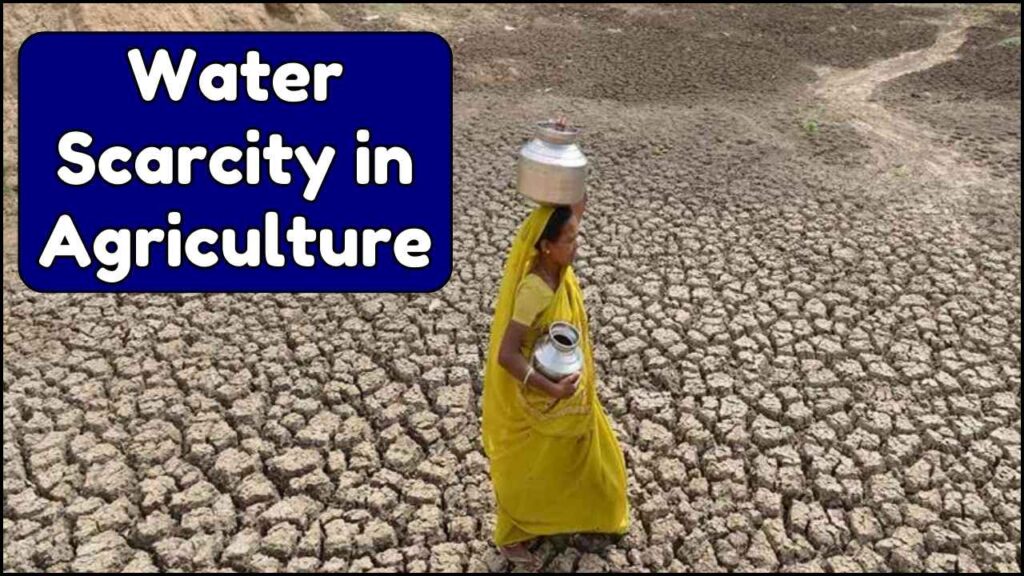
Life on the Earth properly depends on Water and it is also a necessary component for all human activity. The water is also important for the farming and natural environments. The water availability and the agricultural output are inseparable and the water scarcity mainly threatened the industry.
Therefore, water availability and agricultural output are inseparable, and the industry is seriously threatened by water scarcity. The various nations like China and India are poor because of the issues with the environment, insufficient infrastructure, and water management. It has a great and adverse effect on the agricultural output in this area which in turn affects the local economy.
This article examines the interplay between agriculture and water scarcity analyzes how they affect each other and shows the new strategies to tackle these challenges.
The Gravity of the Situation:
- Out of total freshwater, 70% of freshwater is used for agriculture which makes it the largest consumer of the precious resource.
- About 01 billion people around the world lack safe drinking water and this number is expected to increase.
- Because of the reduction of the melting glaciers, unpredictable rainfall patterns, and increasing evaporation climate change makes the water worse.
How does agriculture cause water scarcity?
The estimate of the 4 trillion m3 of freshwater is usually worldwide, making it most exploited the natural resource on the earth. As the consumption pattern becomes more intensive the number increased rapidly.
The consumption of water has consistently risen throughout history, from the earliest farming systems upto the green revolution which first saw the irrigation system introduction. In the upcoming year, the consumption of water will increase as the agricultural industry grows and become more industrialized.
There is a long scientific agreement that this trend not continue. Overall world, traditional farming methods have affected water security and led to the scarcity of water. At this time, natural sources like lakes and rivers are degrading because the water demand is outpacing replacement rates.
How does water scarcity impact agriculture?
The water scarcity mainly reduced the agriculture output which restricted the availability of the food amount and raised problems related to the socio-economic. It is mainly unpredictable since water is a resource that is becoming more and more variable. The abrupt and catastrophic drought is followed by the high availability intervals for whom producers have to deal.
These challenges mainly impact those regions that are prepared less and more vulnerable. In areas like India, China, Africa, and the Middle East, the arid climate combination and the water-intensive crops have water shortages. These regions properly depend on agriculture which depends on the rainfall, which is increased irregularly because of climate change. This will lead to disruptions of the planting seasons and recurring crop failures.
Water scarcity will mainly be broken down into economic and physical causes. Physical water scarcity takes place when the demand for water passes the naturally available water resource. Where there is insufficient infrastructure to store and distribute the water even in the face of abundant water resources, economic water scarcity results.
Water Management in Agriculture: Navigating the Scarcity:
The great news is that we are equipped with the resources and expertise necessary to handle this water crisis. The following are the crucial strategies adopted for sustainable agricultural water management:
1. Precision Irrigation:
- Make the end to the flood and pray strategy. Drip irrigation and sprinkling systems are examples of precision irrigation techniques that increase efficiency and reduce waste by delivering water straight to plant roots.
- The farmers can further improve the water application as per the real-time data by utilizing advanced technologies like satellite images and soil moisture sensors.
2. Water Harvesting and Storage:
- Take a photo of every drip! Rainwater harvesting methods like small dams and rooftop catchment systems can hold valuable rainfall for the use of dry spells.
- The Leakage and evaporation of water can be minimized by investing in ineffective irrigation infrastructure.
3. Crop Selection and Breeding:
- Make a good selection! The changes in crops that can withstand drought like millet and sorghum can reduce the water needs.
- The next way to promote the use of sustainable water is the use of biotechnology and selective breeding to create crop varieties that use less water.
4. Regenerative Agriculture:
- Bring the equilibrium back! Agriculture techniques like composting, reduced tillage, and cover crops can help farmers into an increment of the health of the soil and its ability to keep water.
- The more amount of water is absorbed and stored by the healthy soil which makes it available to the plants at the time of the dry spells.
5. Policy and Education:
- Encourage rather than the correction! Efficient use can promoted by putting into place water pricing rules that rightly represent the water’s worth.
- For success and adoption, it is necessary to give education and training to the farmers on water-saving techniques.
Conclusion:
In agriculture, management of the water resources is a team effort. The Farmers, legislators, researchers, and consumers all work together to get this. We can overcome this difficulty and ensure a future where environmental responsibility and food production coexist peacefully through cooperation, innovation, and sustainable methods.
FAQ:
Q: What is the reason behind the cause of water scarcity in agriculture?
Ans: Agriculture mainly consumes 70% of the water which is the main reason behind water scarcity.
Q: How can water be managed in agriculture?
Ans: The water can be managed by Precise Irrigation, Crop Selection and Breeding, and more.